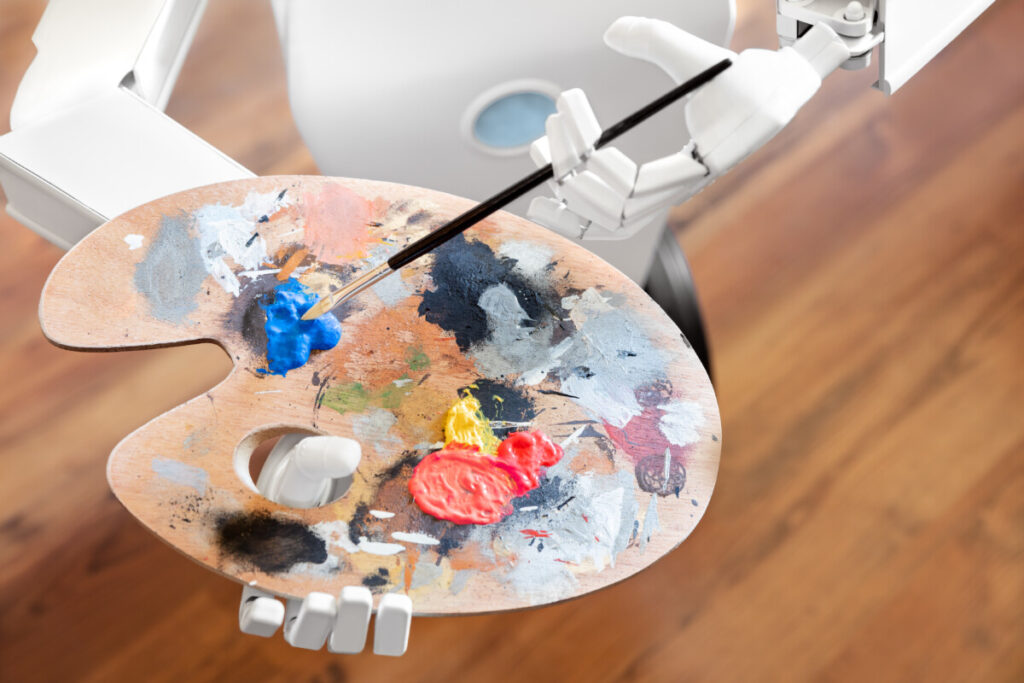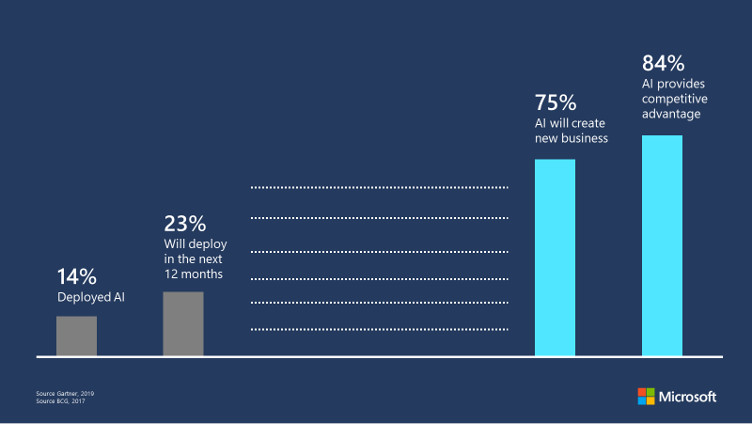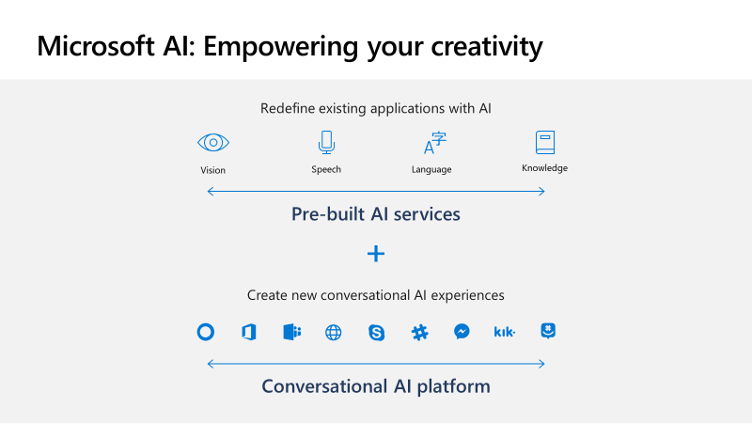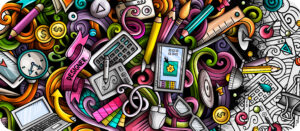
It’s all too easy to get into binary debate about Artificial Intelligence (AI) and Creativity: are AI’s capable of creativity? Will they ever be as creative as human beings? Yes or no?
The reality is far more nuanced. AIs can and should have an intimate relationship to human creativity. They can and should contribute to it, and they can and should be used creatively. I would argue that building a productive relationship between human creativity and AI is essential for the future of AI itself – and it’s also essential for the future of creativity. We have to look at these two things working together, in a symbiotic way, rather than sitting in opposition.
At a time of advancing automation, Creativity remains the essential differentiator – of greater value than at any other point in human history. As Wunderman’s Chief Creative Officer Daniel Bonner puts it, “Creativity the ability to have an entirely original thought, and as such it provides any business with the opportunity to have competitive advantage.” When we increase the potential of more people to be creative, we create greater equality of opportunity. And AI can help with that. However, when we reduce creativity down to a standard, homogenised form, we take away that opportunity to differentiate yourself or your business. We have to ensure that’s not what happens.
Creativity has to stay abreast of all the relevant insights and inputs if it’s to come up with original ideas that are also relevant ideas. Because it’s now intrinsically linked to competitiveness, it has to be ready to evolve quickly – because that’s how competition works. And that rapid evolution will inevitably involve AI. If you insist on being creative without any interaction with insights and ideas produce by algorithms, you’ll be leaving yourself at a serious competitive disadvantage. No true creative wants less insight and inspiration available to them.
The game will move on quickly, as AI standardises certain creative processes and even basic levels of creative thinking. However, by an almost mathematical rule, every time basic creativity becomes automated and easier, it brings the opportunity for higher-level creative thinking within reach. As our inputs become more creatively advanced, we should aspire to more creative outputs off the back of them.

We’ve got to remember to do this, though. As creative-minded marketers, we have to remember not to settle for the perfectly respectable, data-optimised creative solutions that an AI is likely to come up with. We have to commit to using those ideas as a starting point for our human creative process and taking them in further, more unexpected and original directions; directions that are informed by human imagination and human empathy that machines don’t have access to.
We also have to be creative in the way we conceive of using AIs themselves – the questions we dream up for them to answer, and the sources of insight we imagine can help to come up with those answers. If AI isn’t creative, it won’t really be Artificial Intelligence – it will just be artificial execution.
Here’s how I think we can make it happen – at all of the key stages of an AI-powered creative process:
Defining the AI and the problem it solves – creative questioning
Ask any Netflix subscriber to name an impressively creative AI and there’s a decent chance that they will name AlphaGo. The system designed by Google’s parent Alphabet to beat human champions at the world’s most complex strategy game is the subject of a documentary that’s been a huge hit on the streaming service.
AlphaGo embodied the leap from Narrow AI to Machine Learning, which is the development that holds out most promise for AIs coming up with creative ideas. A narrow AI algorithm is designed to analyse a particular data set in a particular way (to look for certain features in order to identify which photographs contain cats, for example). A Machine Learning system is different because it can look at relationships between different data sets, spot connections and make predictions that we wouldn’t be capable of (as AlphaGo did). It’s capable of lateral thinking.
AlphaGo itself wasn’t the end of the Go-playing AI story. It’s capabilities were themselves surpassed by AlphaZero, an AI capable of teaching itself everything that AlphaGo took months to master in just three days. AlphaZero benefited from a Deep Learning system that can categorise its own data sets, put things into context, and start looking for relationships that we never suspected of existing.
Machine Learning and Deep Learning are both capable of having what we might call ideas. Indeed, they are capable of having ideas that a person would probably never have. However, the value of those ideas depends upon the context in which they are happening – the questions that we can sensibly ask of a set of data. And that’s the first point at which human creativity needs to be involved in AI.
When you think about it, winning a game of Go isn’t really the most creative application of AI that you can imagine. It takes something with a pre-defined set of source data (the mathematical rules of the game), and a clearly defined problem that deep learning can use that data to solve. These are the kind of situations in which AIs excel: point them at a set of data that contains all of the required answers and then train them to work those answers out. It’s far more of a challenge for AI’s to imagine wholly unrelated problems that they could conceivably solve, and imagine wholly new data sets that could help to solve them. AlphaZero has amazing capacity for understanding context and finding new ways to solve problems – but it can’t solve the problem of global warming or plastic pollution in the ocean, because it exists to play Go. It’s unaware that these problems exist, it can’t conceive why they are problems, and it wouldn’t know where to start looking for solutions. Perhaps most importantly, it’s not necessarily motivated to solve them.
A deep learning system’s thinking can jump in unexpected ways but it can’t take lateral leaps into a wholly unconnected area of experience and thought. The macro decisions about what AIs are capable of are human, creative decisions. We have to imagine the questions that need answering – and how to ask them.
In many of the most famous applications of AI in marketing so far, that’s exactly what’s happened. It’s impressive that an AI could learn to paint in the style of an old master to create the Cannes Lion-winning The Next Rembrandt campaign for ING – but it’s difficult to imagine an AI coming up with the concept of painting like an old master in order to deliver against a creative brief.

Conceive of the data sets that AI can bring into play – creative imagination
Our creative ability to ask new questions and imagine new problems is closely linked to our ability to conceive of new forms of insight and data that can help to answer those questions. Once again, this is an inherently imaginative exercise. The idea that the insight that sheds new light on a problem might be found somewhere wholly unconnected to that problem won’t occur to an AI, because its thinking universe is defined by the data it has access to. It requires human imagination to imagine that a different universe of data exists somewhere.
Now of course, it’s conceivable that a deep learning AI with the full power of the internet at its disposal could be capable of exploring connections between categories of data that we wouldn’t expect it to. However, AIs are also limited in another important way. When something doesn’t exist as a quantifiable stream of data, it doesn’t exist to an AI. And it’s hard for even the most advanced deep learning system to imagine something into existence that (as far as it’s concerned) doesn’t exist.
Human beings’ experience of the world isn’t limited to things that exist in a quantified form. In every waking moment, we experience sensations and emotions in a way that isn’t available to machines. No AI knows the feeling of hunger or physical fear; the experience of warmth and cold, dry or wet, the instinctive response to wind or fire. No AI knows the effects of being physically attracted to another AI or the complex interconnected emotions related to the simple fact of whether you have a roof over your head or not. Because we experience so much more our capacity for imagination is so much more powerful – and that includes imagining potential sources of data and insight that an AI would have no inkling of. We just have to figure out ways to quantify them – and that’s an exercise in human imagination as well.

Think creatively about where the gaps in the AI are
When I think about AI and human creativity, I often think of Garry Kasparov. Because he famously lost a chess match to Deep Blue, he’s often framed as a fall guy in the evolution of AI to compete with human thinking. I don’t see it that way, though. The chess games that Kasparov played against Deep Blue were heroically creative, battling against an opponent that was unlike any he’d previously played, probing for weaknesses using his unique levels of experience and lateral thinking – and all the time adding to the data that his opponent could use to defeat him.
We need to inject similar levels of creativity into the development of AIs today – because if we don’t probe for weaknesses in the algorithms using human imagination, then those weaknesses could well lie undetected to bias the results of AI in the future.
Researchers at Georgia Tech recently discovered that the AI systems controlling self-driving cars seem to be more likely to hit people with darker skin tones. The evidence suggests this isn’t a result of darker skin tones being harder to detect. Something in these AI systems influences decision-making in a way that is ethically unacceptable. It’s not obvious what that thing is – and that’s why it hasn’t been detected. It’s a warning that prove that, when it comes to safeguarding the impact of AI, it’s vital that we interrogate systems creatively, looking for sources of potential bias that aren’t intended or logical – but are there nonetheless. Creative thinking is essential for keeping AI on the straight and narrow.
Using AI as the creativity baseline
Human creativity is essential for the development of AI through imagining new questions, new forms of data that can be quantified to answer them, and creatively interrogating AIs themselves to find weaknesses and biases, and correct them. How about the ways that AI can contribute to human creativity?
I see two main levers through which AI can push creativity forward. Both are dependent on humans continuing to value their unique creative potential – and staying ambitious about pushing the boundaries when it comes to what creativity is capable of.
The first involves using the ideas that AIs are able to generate as a higher-level input into the creative process. It’s a case of standing on the shoulders of what artificial thinking and data can do – and being ready to take the next step through humans’ more instinctive and emotive capabilities. An intriguing early example of this is the video ad launching the new Lexus ES series, which was created through a combination of AI and human instinct. Lexus’s agency The&Partnership took the creative decision that the value of a connected vehicle with AI systems built in could be brought to life through an ad created by AI. It worked with another agency, VisualVoice, to develop an AI to do just that – and provided it with data capturing the characteristics of the most effective auto ads, and the most effective luxury ads. That AI then generated a script, with elements designed to produce particular reactions in an audience that had delivered results in the past.
The script wasn’t strikingly unconventional in itself – but if you ask me, it was different enough from what auto ads typically look like. However, the script itself was only the start of the process. Put into the hands of an award-winning film director, Kevin McDonald, it was brought to life in an emotive, impactful, deeply human way that ensured the elements the AI had identified got the best possible treatment. I think the results are impressive – and it wouldn’t surprise me if they were effective. It’s the ability of human creatives to define a role for AI, then take the input that it produces and take it to the next level, which delivered them.
Distinguishing between craft and creative thinking
The second way in which AI can push human creativity forward involves unpicking what creativity itself actually means. AI forces us to distinguish between creativity and craft – between creative skills that can be learned, and the original thinking and empathy that puts those skills to impactful and emotive use. When companies like Adobe first developed instantly available fonts and software like Photoshop, designers feared they’d be out of work – because so much of their craft had suddenly been automated. What actually happened was that design was elevated to a higher level. Rather than spending hours over typography or image manipulation, designers devoted their time to coming up with more imaginative layouts that could engage people on a different level – and do so more efficiently.
I believe that’s the real promise with AI and creativity: not to replace it, to replicate it or to cheapen it, but to take its potential to the next level.
The irony is: that’s also exactly what creativity can do for AI.






